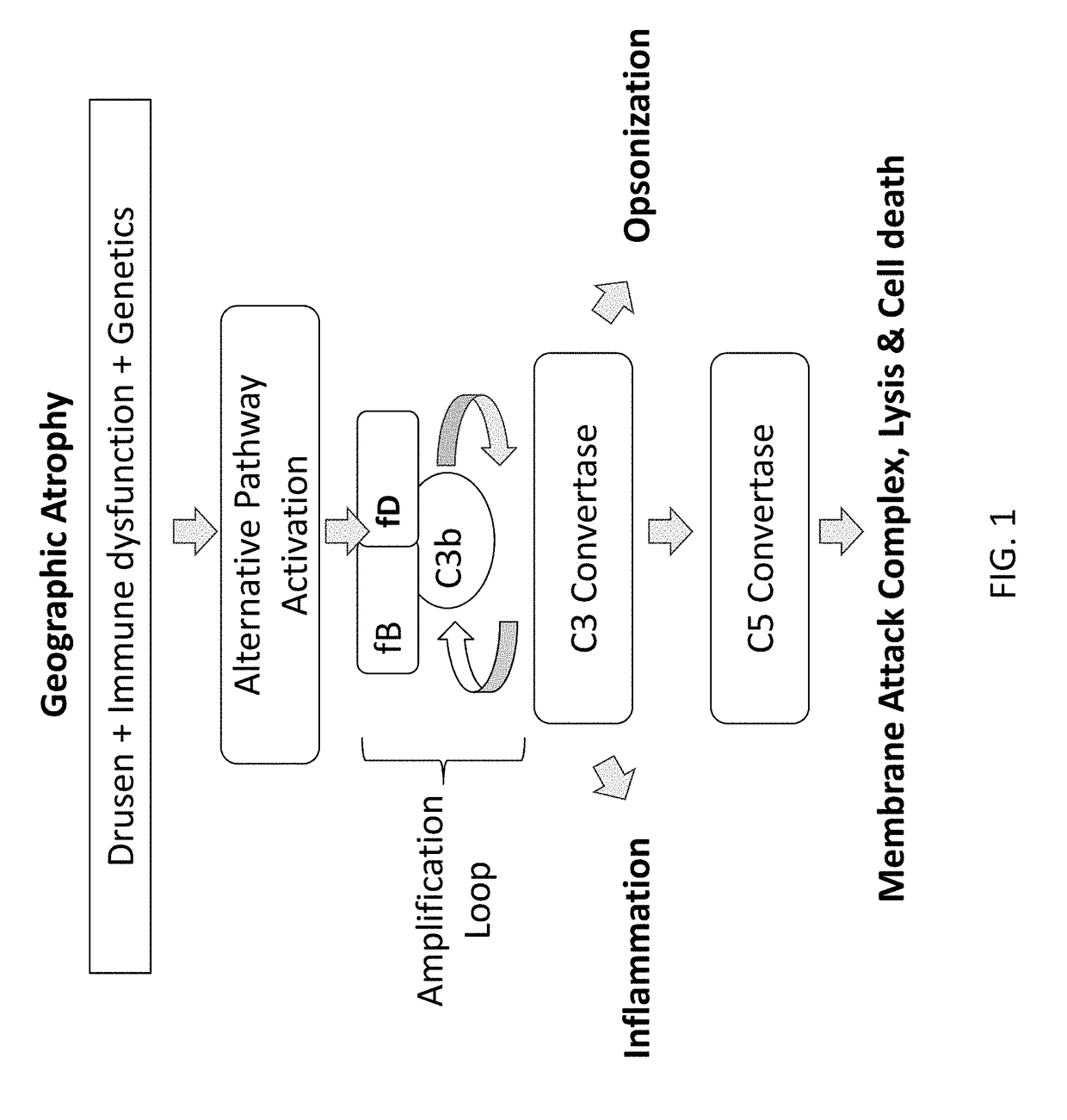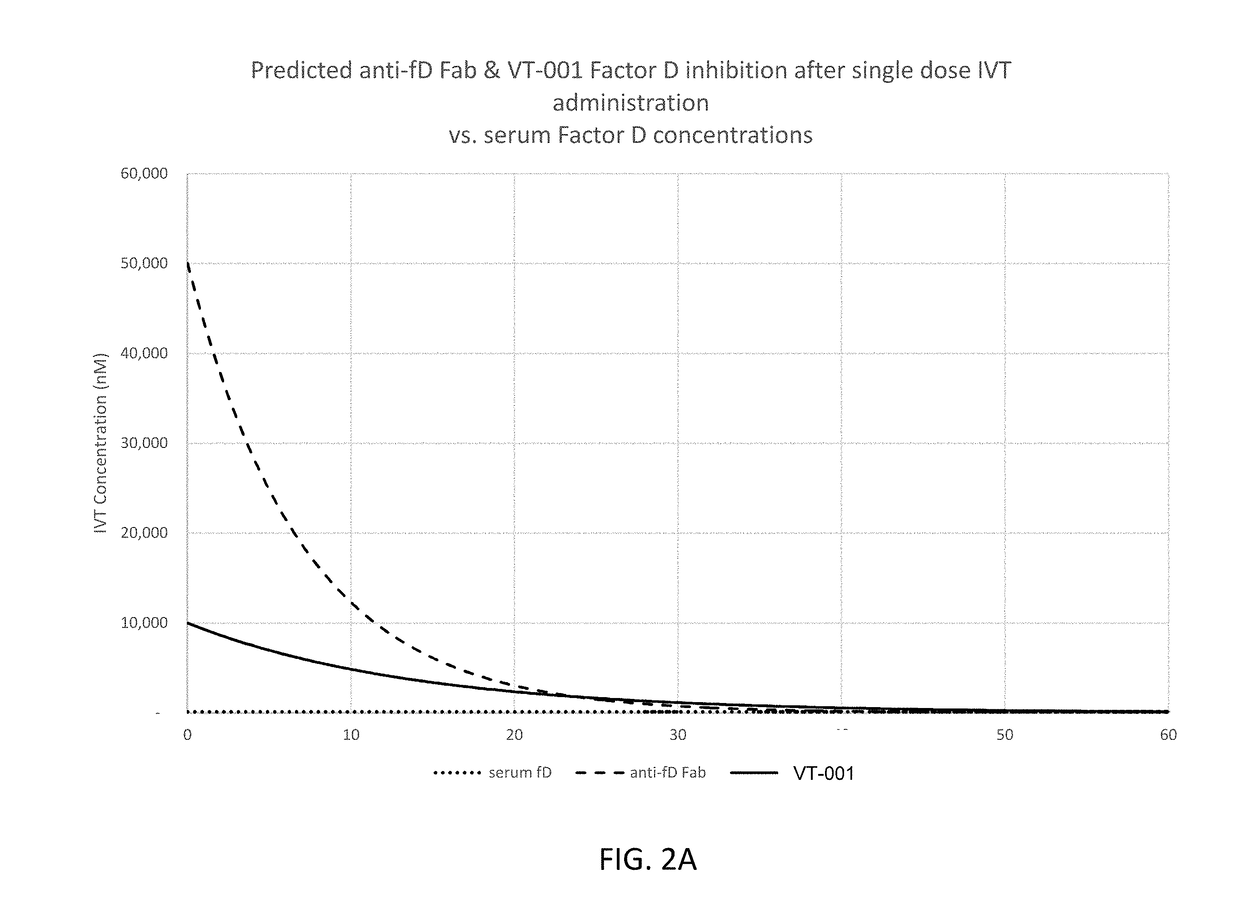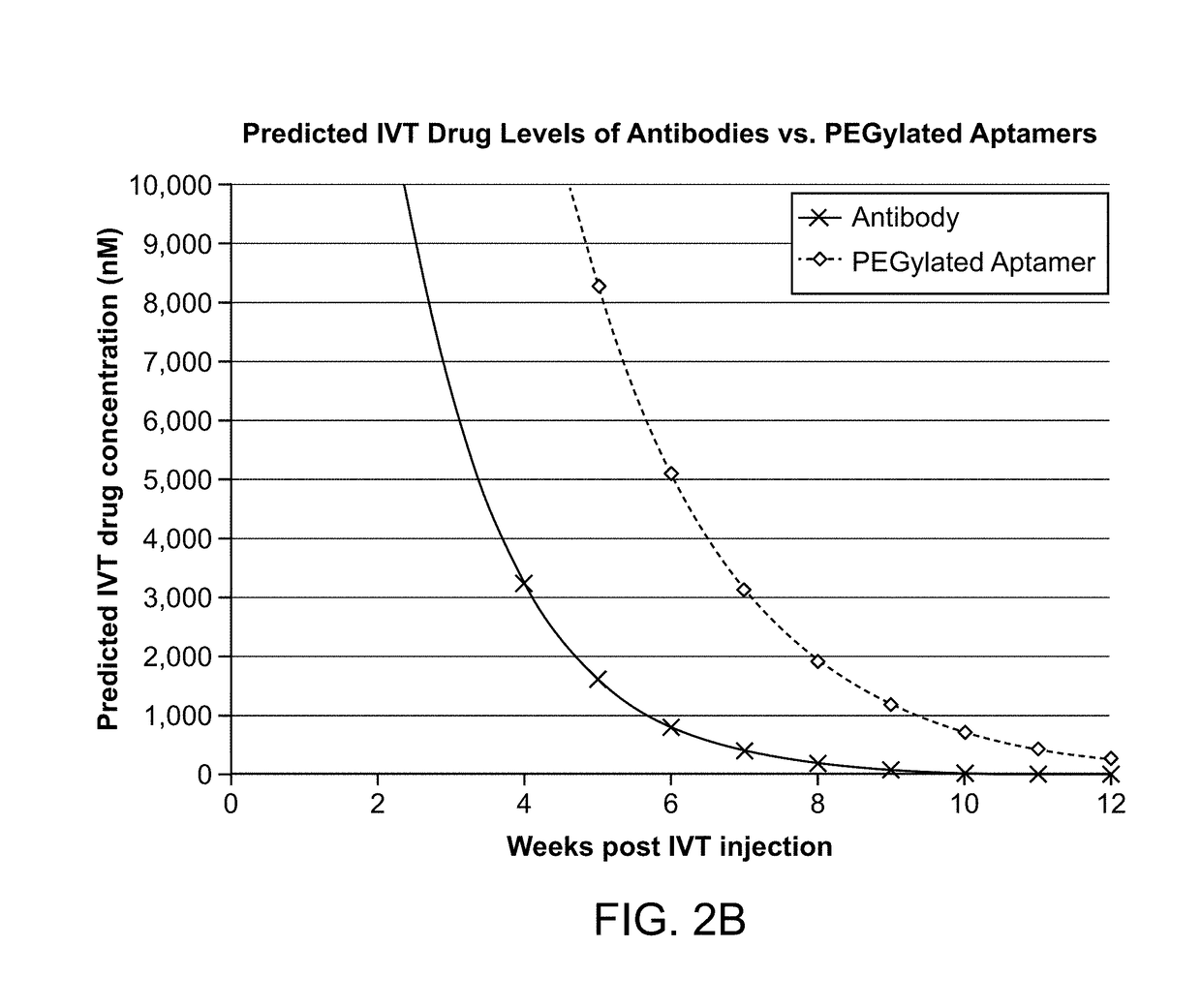Compositions and methods for inhibiting factor d
a technology of compound and factor d, which is applied in the direction of drug compositions, biochemical equipment and processes, organic active ingredients, etc., can solve the problems of cell death and retinal atrophy, and no fda-approved treatment exists for dry amd or geographic atrophy,
- Summary
- Abstract
- Description
- Claims
- Application Information
AI Technical Summary
Benefits of technology
Problems solved by technology
Method used
Image
Examples
example 1
ation of Modified RNA Aptamers to fD
A. Selection of Anti-Factor D Aptamers
[0137]Anti-factor D (fD) aptamers were identified using an N30 library (N30S) comprised of a 30-nucleotide random region flanked by constant regions containing a built-in stem region as depicted in FIG. 3A. The sequence in italics represents the forward and reverse primer binding sites. The built-in stem region is shown in bold. FIG. 3B depicts a representation of the N30S library with the reverse oligo hybridized. For nuclease stability, the library was composed of 2′F G and 2′-O-methyl A / C / U. FIG. 3C depicts structures of modified nucleotides used to generate the N30S library for selection against target fD. For simplicity, the nucleosides, and not the nucleotide triphosphates are shown.
[0138]The library sequence (underlined sequences represent the built-in stem) and the sequence of oligos used to amplify the library are described in Table 2.
TABLE 2Library sequence and sequence of oligos used to amplify the ...
example 2
of DNA Aptamers to Human Complement Factor D
[0151]Aptamers against human complement factor D (fD) were isolated by selection using an aptamer library composed of a 40-nucleotide random region flanked by defined fixed sequences (see Table 6). The library was comprised of unmodified DNA. The selection library was produced by solid phase DNA synthesis and gel purified prior to use.
TABLE 6Oligonucleotides used to construct and replicate aptamer librarySEQ ID NO.CompoundSequence (5′ to 3′)SEQ ID NO: 67Selection library*GTGACGACTGACATATCTGC-CGTAGTTGAGTCTGAGTGCTSEQ ID NO: 68Forward primerGTGACGACTGACATATCTGCSEQ ID NO: 69Reverse primer 1AGCACTCAGACTCAACTACGSEQ ID NOS: 70Reverse primer 2**AAAAAAAAAAAAAAAAAAAA-59-and 91AGCACTCAGACTCAACTACG*″N″ indicates the nucleotide at this position is randomized and could be A, G, C or T in the starting library, with an ~25% chance of each base at each randomized position.**″S9″ represents a hexaethylene glycol spacer
[0152]Prior to each round of selection,...
example 3
of Base Modified Aptamers to fD
A. Preparation of Bead-Immobilized, Base-Modified Aptamer Libraries
[0165]Bead-immobilized, base-modified libraries for selection of aptamers to fD were constructed as follows. Briefly, polystyrene beads were used to synthesize bead-based library designs. Representative random regions are shown in Table 12. For each library, synthesis was performed on four separate columns with a pool and split step after every second base to create a random region of fifteen two-base blocks based on a software-generated design. The two-base block library design enables a means to identify sites of incorporation of base-modified residues during analysis of the resultant aptamer sequence data. 5-Position-modified deoxyuridine residues (in bold) were randomly scattered in the random region. This allows for library sequences that have from zero to twelve modifications. The three modifications used in this example (indoles, phenols and primary amines) were introduced with m...
PUM
| Property | Measurement | Unit |
|---|---|---|
| Molar density | aaaaa | aaaaa |
| Temperature | aaaaa | aaaaa |
| Temperature | aaaaa | aaaaa |
Abstract
Description
Claims
Application Information
 Login to View More
Login to View More - R&D
- Intellectual Property
- Life Sciences
- Materials
- Tech Scout
- Unparalleled Data Quality
- Higher Quality Content
- 60% Fewer Hallucinations
Browse by: Latest US Patents, China's latest patents, Technical Efficacy Thesaurus, Application Domain, Technology Topic, Popular Technical Reports.
© 2025 PatSnap. All rights reserved.Legal|Privacy policy|Modern Slavery Act Transparency Statement|Sitemap|About US| Contact US: help@patsnap.com



